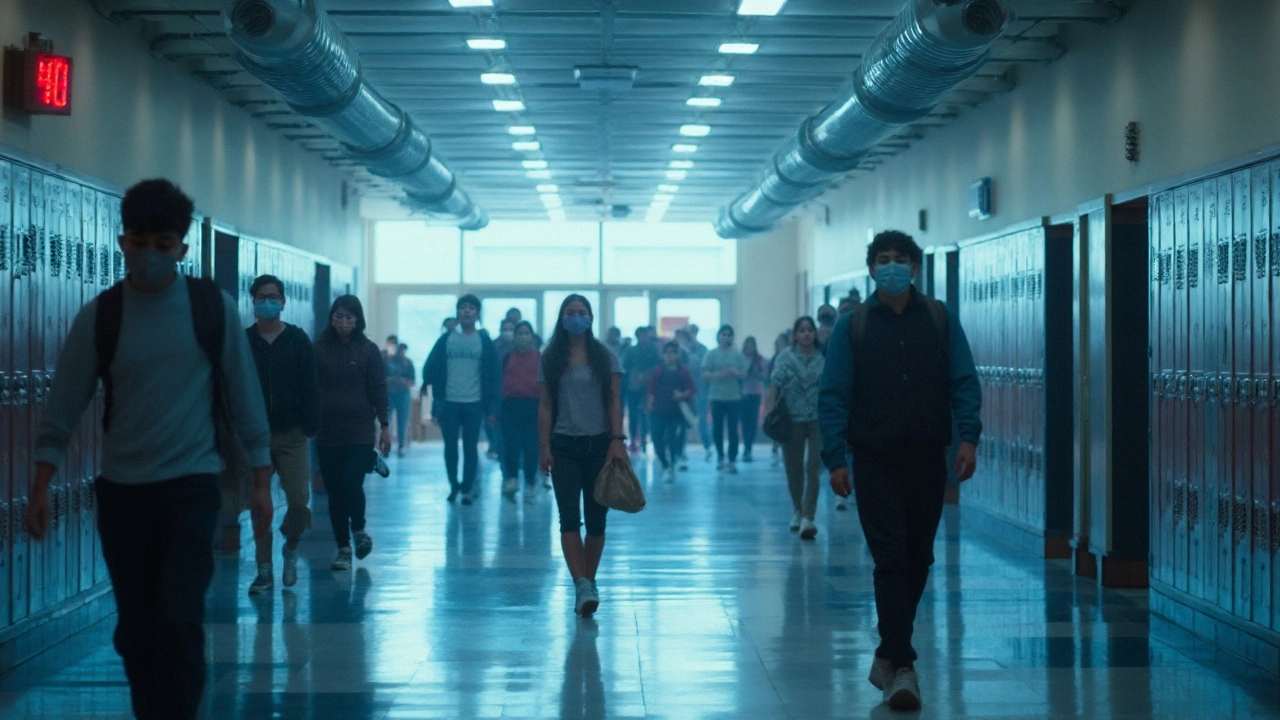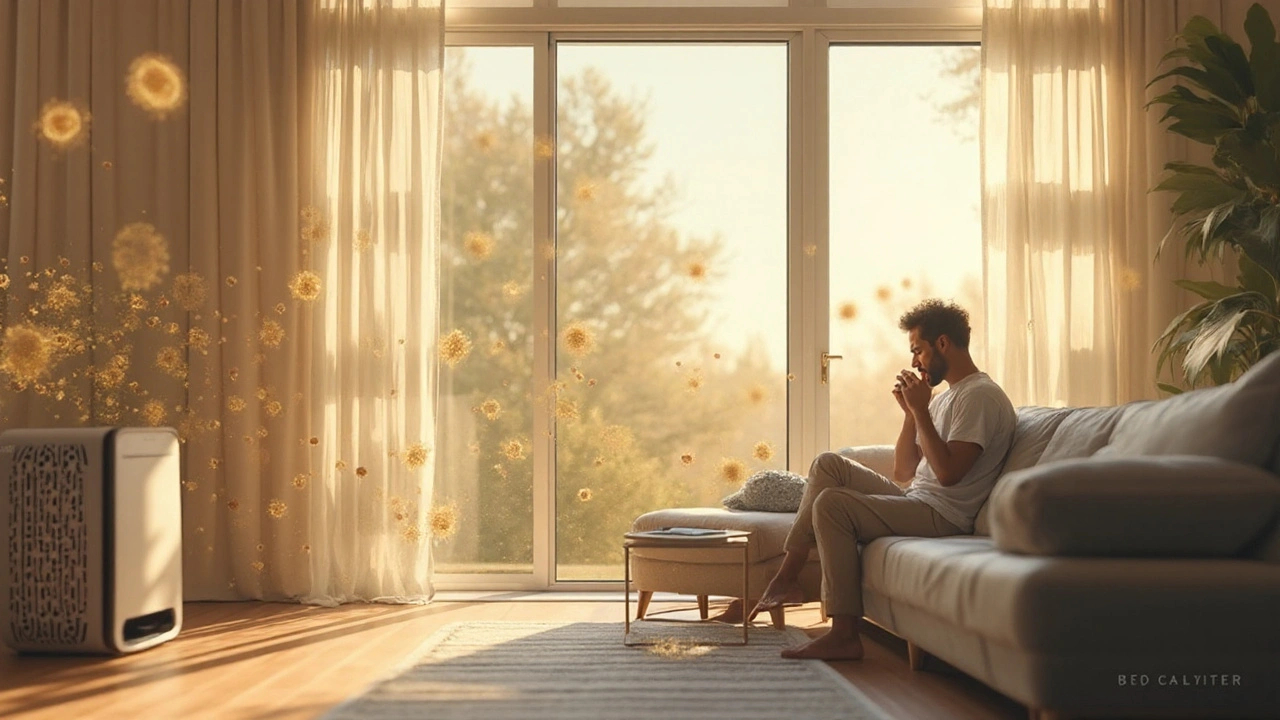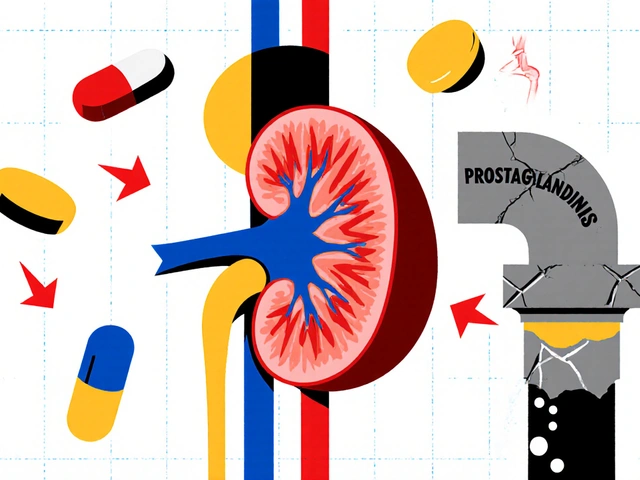TL;DR
- Airborne spread of pulmonary TB thrives in poorly ventilated, crowded spaces.
- Low humidity and cool temperatures increase bacterial survival.
- Ultraviolet (UV) radiation can inactivate Mycobacterium tuberculosis (the TB bacterium) quickly.
- Socio‑economic conditions and co‑morbidities (HIV, diabetes, smoking) amplify environmental risks.
- Simple interventions-ventilation upgrades, UVGI fixtures, humidity control-cut transmission by up to 70%.
What are environmental factors in TB transmission?
Environmental factors are physical and climatic conditions that influence how pulmonary tuberculosis spreads from person to person. They include air flow, temperature, humidity, ultraviolet (UV) exposure, and the degree of crowding in indoor settings. While the bacterium Mycobacterium tuberculosis (MTB) is the core pathogen, the surrounding environment determines whether infectious droplets linger long enough to be inhaled by a susceptible host.
Key environmental drivers
Below we break down the most critical drivers, each introduced with a concise definition and the latest quantitative findings.
Indoor ventilation
Indoor ventilation is the process of exchanging indoor air with fresh outdoor air, usually measured in air changes per hour (ACH). A 2023 WHO field study in South‑East Asia found that rooms with ≥12ACH reduced TB infection risk by 71% compared with poorly ventilated spaces (≤2ACH).
Crowding density
Crowding density quantifies the number of occupants per square metre of floor space. In prison outbreaks, a density exceeding 0.5personsm⁻² correlated with a three‑fold rise in secondary cases (CDC, 2022).
Relative humidity
Relative humidity (RH) is the amount of water vapour present in air relative to its maximum capacity at a given temperature. Laboratory work shows MTB survives longest at 30‑45% RH; survival drops sharply above 60% RH because droplets evaporate faster, diminishing bacterial viability (Lancet Respir Med, 2021).
Temperature
Cool indoor temperatures (15‑20°C) favour MTB stability, extending aerosol lifetime. In contrast, temperatures above 25°C accelerate desiccation, cutting viable airborne particles by roughly half within 30minutes (J Infect Dis, 2020).
Ultraviolet radiation
Ultraviolet germicidal irradiation (UVGI) uses UV‑C light (254nm) to damage bacterial DNA. Real‑world trials in Tanzanian clinics demonstrated a 64% reduction in tuberculin conversion among healthcare workers after installing ceiling‑mounted UVGI units (Lancet Global Health, 2022).
Socio‑economic and health co‑factors
While not a pure physical environment, socio‑economic status (SES) shapes living conditions that amplify environmental risks. Low‑income households often lack proper ventilation and experience higher crowding. In addition, co‑morbidities such as HIV infection, diabetes, and chronic smoking increase susceptibility, turning a modest environmental exposure into a major transmission event.
Comparing mitigation options
| Intervention | Typical Effectiveness (%risk reduction) |
Implementation Cost | Maintenance Needs |
|---|---|---|---|
| Increase natural ventilation (≥12ACH) | 70‑75 | Low (structural tweaks, windows) | Minimal |
| Mechanical ventilation with HEPA filters | 55‑65 | Medium‑high (equipment, electricity) | Regular filter replacement |
| Upper‑room UVGI | 60‑70 | Medium (lamp purchase, shielding) | Annual lamp cleaning/replacement |
| Humidification (maintain 55‑70% RH) | 30‑40 | Low‑medium (humidifiers) | Monitor RH levels |
| Crowding reduction (space re‑allocation) | 50‑80 | Variable (depends on facility) | Ongoing administrative control |
Choosing the right mix depends on local resources, building design, and the epidemiological context. In many low‑resource settings, maxising natural ventilation and installing UVGI give the biggest bang for the buck.
How environmental factors intersect with public health policy
World Health Organization (WHO) guidelines now list “ventilation, UVGI and crowding control” as core infection‑control measures for high‑TB‑burden countries. National TB programs that integrate these recommendations have reported up to a 30% decline in incidence within five years (UN‑TB Report, 2024). Policy levers include building‑code amendments, funding for clinic retrofits, and community‑level education about keeping windows open.

Real‑world examples
Example 1 - A Sydney homeless shelter: After a 2022 outbreak, managers installed ceiling‑mounted UVGI and upgraded window screens to achieve 10ACH. Follow‑up testing showed zero new conversions among residents over an 18‑month period.
Example 2 - Rural clinic in Kenya: The clinic could not afford mechanical ventilation. Instead, they painted high‑visibility “Open windows for health” signs, kept doors ajar, and placed portable humidifiers during the dry season. The annual tuberculin conversion rate dropped from 9% to 3%.
Future research directions
Emerging studies are looking at how climate change‑driven temperature and humidity shifts might reshape TB hotspots. Satellite‑derived RH maps combined with mobile TB screening data could predict seasonal surges, allowing pre‑emptive ventilation campaigns. Additionally, wearable CO₂ monitors are being trialled as real‑time proxies for ventilation adequacy.
Practical checklist for facility managers
- Measure current ACH; aim for ≥12ACH in high‑risk areas.
- Assess crowding: keep personsm⁻² below 0.4 where possible.
- Maintain indoor RH between 55%‑70% during dry months.
- Install upper‑room UVGI fixtures; schedule annual lamp cleaning.
- Educate staff and occupants on keeping windows open and doors uncluttered.
- Log CO₂ levels; >800ppm signals inadequate ventilation.
Conclusion
Environmental factors are the silent partners that either fuel or quench the spread of pulmonary tuberculosis. By understanding and tweaking ventilation, humidity, UV exposure, and crowding, health officials can slash transmission rates without relying solely on antibiotics or vaccines. The data are clear: even modest, low‑cost changes can save lives, especially in high‑burden communities.

Frequently Asked Questions
How does ventilation affect TB spread?
Ventilation dilutes infectious droplets by replacing stale indoor air with fresh outdoor air. Higher air changes per hour (ACH) lower the concentration of airborne Mycobacterium tuberculosis, cutting infection risk dramatically. Studies show rooms with ≥12ACH reduce transmission risk by over 70% compared with poorly ventilated spaces.
Can humidity really change TB survival?
Yes. MTB survives longest at low relative humidity (30‑45%). When humidity rises above 60%, droplets evaporate quicker, and the bacteria lose viability. Maintaining indoor humidity between 55‑70% during dry seasons can therefore reduce the number of viable airborne particles.
What is UVGI and how effective is it?
UVGI (ultraviolet germicidal irradiation) uses UV‑C light to damage the DNA of airborne microbes, including MTB. Real‑world trials in clinics have shown a 60‑70% reduction in tuberculin conversion among staff after installing properly shielded UVGI fixtures.
Do social factors matter if I fix the environment?
They amplify or dampen the effect of physical measures. Low socio‑economic status often means crowded homes and poor ventilation, so even the best technical fixes may be undermined without addressing crowding and poverty. Integrated approaches that combine environmental upgrades with social support yield the biggest impact.
What low‑cost steps can a small clinic take right now?
Open windows and doors to boost natural ventilation, use simple fans to improve air flow, display signage reminding staff to keep spaces uncluttered, and add portable humidifiers during dry months. If budget allows, install a single UVGI lamp in the waiting area and monitor CO₂ levels with cheap sensors.






Brooks Gregoria
September 25, 2025 AT 02:59Sure, blaming ventilation is just a convenient excuse for ignoring the real socio‑political roots of TB.
Sumit(Sirin) Vadaviya
September 27, 2025 AT 13:05While I understand the frustration, the data clearly show that improved airflow can cut transmission dramatically. 😊
lindsey tran
September 29, 2025 AT 23:11OMG, this article is like a wake‑up call! The way they lay out the humidity numbers got me like 😱. I cant believe we ignore such simple fixes. It's sooo easy to open a window and protect our fams.
Krishna Sirdar
October 2, 2025 AT 09:18Indeed, the science is straightforward: fresh air dilutes the bacteria. Simple steps like window fans can make a huge difference, especially in crowded homes.
becca skyy
October 4, 2025 AT 19:24From a cultural standpoint, many communities view open windows as a sign of vulnerability, not health. We need to shift that narrative and celebrate ventilation as strength. Education campaigns can help reframe the perception.
Theo Roussel
October 7, 2025 AT 05:30Integrating HEPA filtration within HVAC systems elevates the ACH metric, thereby optimizing aerosol clearance kinetics. However, capital expenditure and maintenance cycles must be accounted for in cost‑benefit analyses.
Erick Masese
October 9, 2025 AT 15:37It is rather elementary that environmental controls form the backbone of infection control. Yet, many overlook this simple truth.
Matthew Charlton
October 12, 2025 AT 01:43Great point! Remember, change starts with small actions. Encourage staff to open doors during breaks, and track CO₂ levels as a proxy for ventilation. Those incremental steps accumulate into meaningful impact.
Pamela may
October 14, 2025 AT 11:49First off, the idea that we can just sprinkle some humidity and call it a day is laughable.
People love to talk about high‑tech UVGI, but they forget the basics like not crowding a room.
If you think a single fan can replace a proper ventilation system, you are deluding yourself.
The data from WHO clearly indicates that rooms with less than two ACH are breeding grounds.
Yet politicians keep promising vaccines while ignoring the fact that the air itself is a vector.
Open windows are not just a suggestion; they are a necessity in any setting with people.
I have seen prisons where the air is stale enough to choke a newborn.
In those places, a simple overhaul of the ventilation could slash transmission by half.
But bureaucracy moves slower than a snail crawling through tar.
Meanwhile, patients suffer because the system refuses to allocate funds for fans.
The cost of a UV lamp is pennies compared to the human cost of an outbreak.
Do we really need a Nobel Prize to understand that fresh air works?
Education campaigns must stop preaching abstract science and start showing door handles being opened.
Community leaders can champion the act of cracking a window even in winter.
When the community embraces ventilation, the pathogen loses its advantage.
So stop whining about fancy tech and start opening doors, literally.
tierra hopkins
October 16, 2025 AT 21:56While the passion is appreciated, it's vital to ground recommendations in peer‑reviewed studies. Evidence‑based policy drives real progress.
Ryan Walsh
October 19, 2025 AT 08:02Totally agree, just crank up the fans and keep the doors ajar.
Kiersten Denton
October 21, 2025 AT 18:08It's an interesting perspective.
Karl Norton
October 24, 2025 AT 04:15Honestly, this reads like a recycled press release with zero original insight.
Ashley Leonard
October 26, 2025 AT 13:21Could we maybe explore case studies from low‑resource settings where community engagement drove ventilation improvements? Those stories could add depth.
Ramanathan Valliyappa
October 28, 2025 AT 23:27The article lacks citations for several key claims.
Jennifer Harris
October 31, 2025 AT 09:34I'd love to see data on CO₂ thresholds correlated with infection rates; that would solidify the argument.
Northern Lass
November 2, 2025 AT 19:40One must interrogate the epistemological foundations upon which such environmental determinism rests, lest we indulge in reductive scientism.
Johanna Sinisalo
November 5, 2025 AT 05:46Your emphasis on interdisciplinary collaboration is commendable. Integrating engineering, epidemiology, and sociology will undoubtedly enhance intervention efficacy.
surender kumar
November 7, 2025 AT 15:53Oh sure, just sprinkle some UV light and the TB monsters will vanish-if only the world were that simple.
Shelby Rock
November 10, 2025 AT 01:59i think we gotta look at the big picture, not just the tiny dust particles.